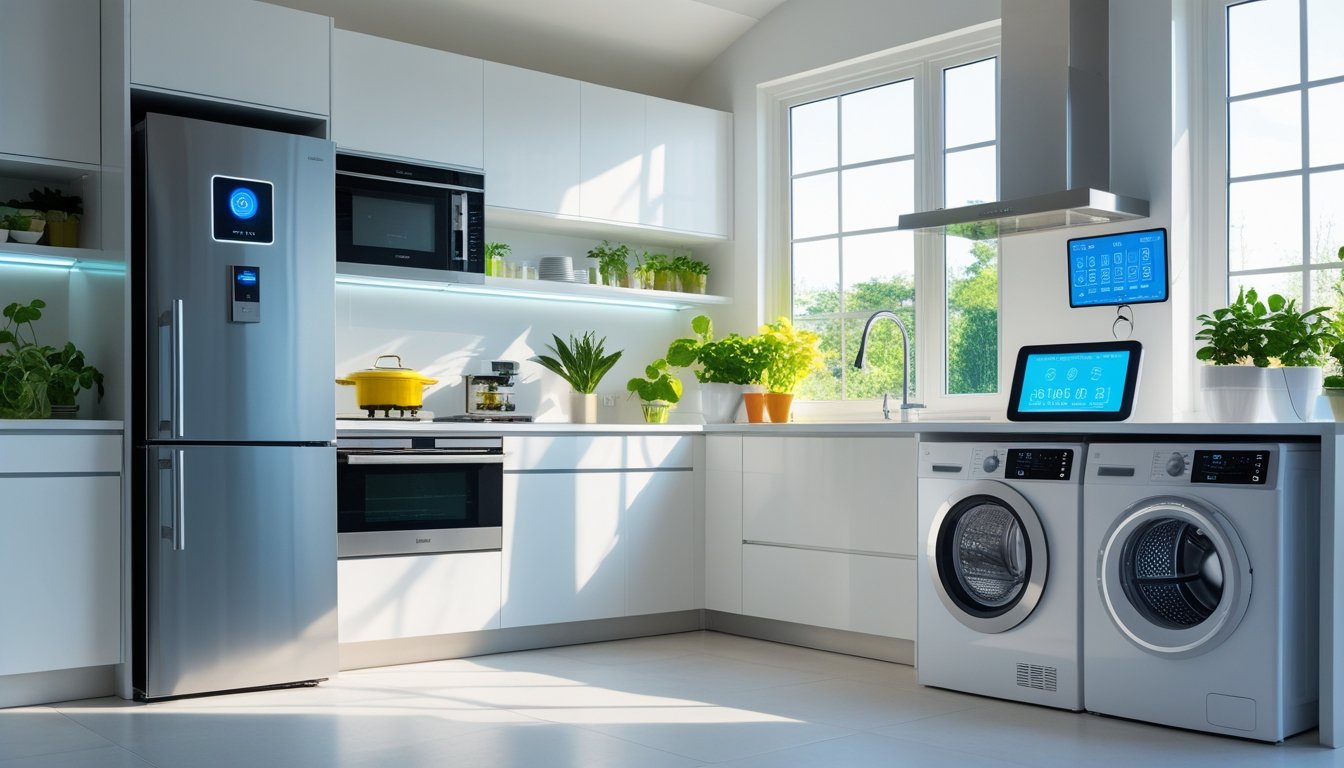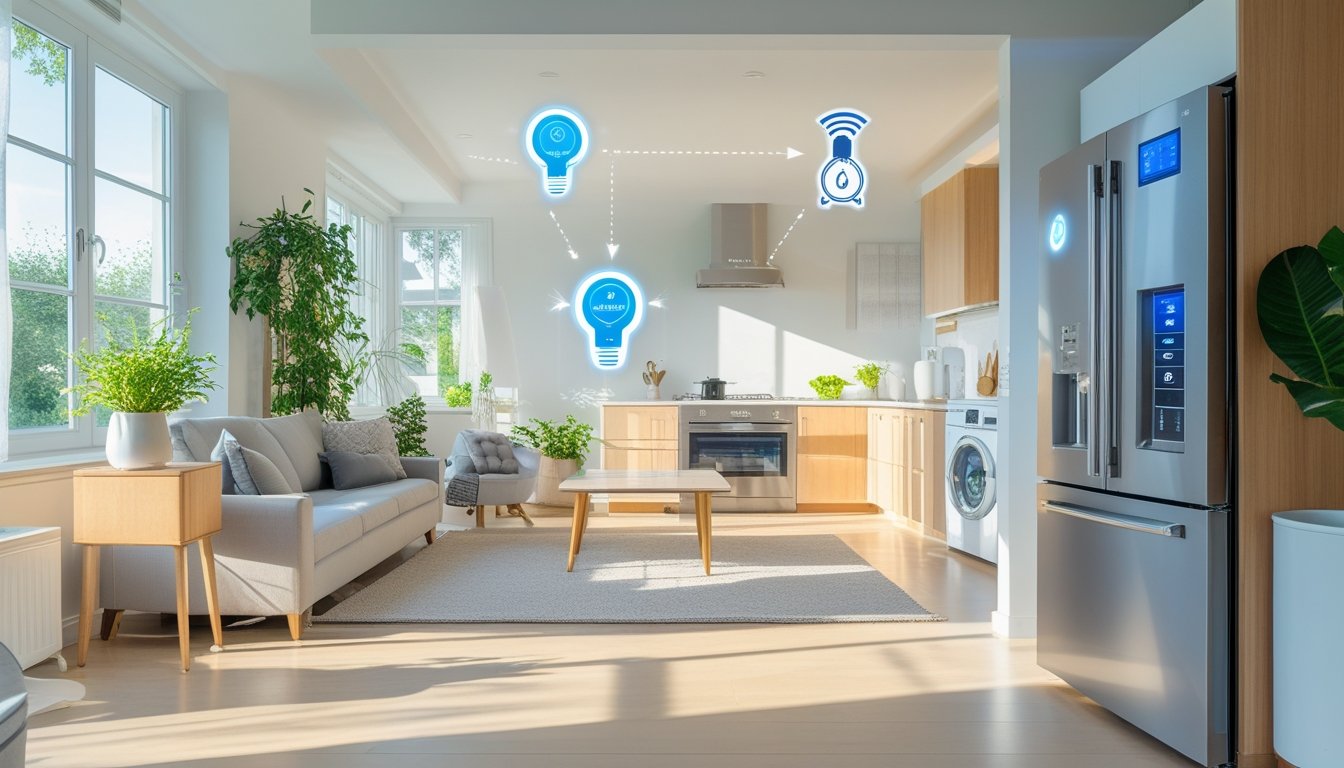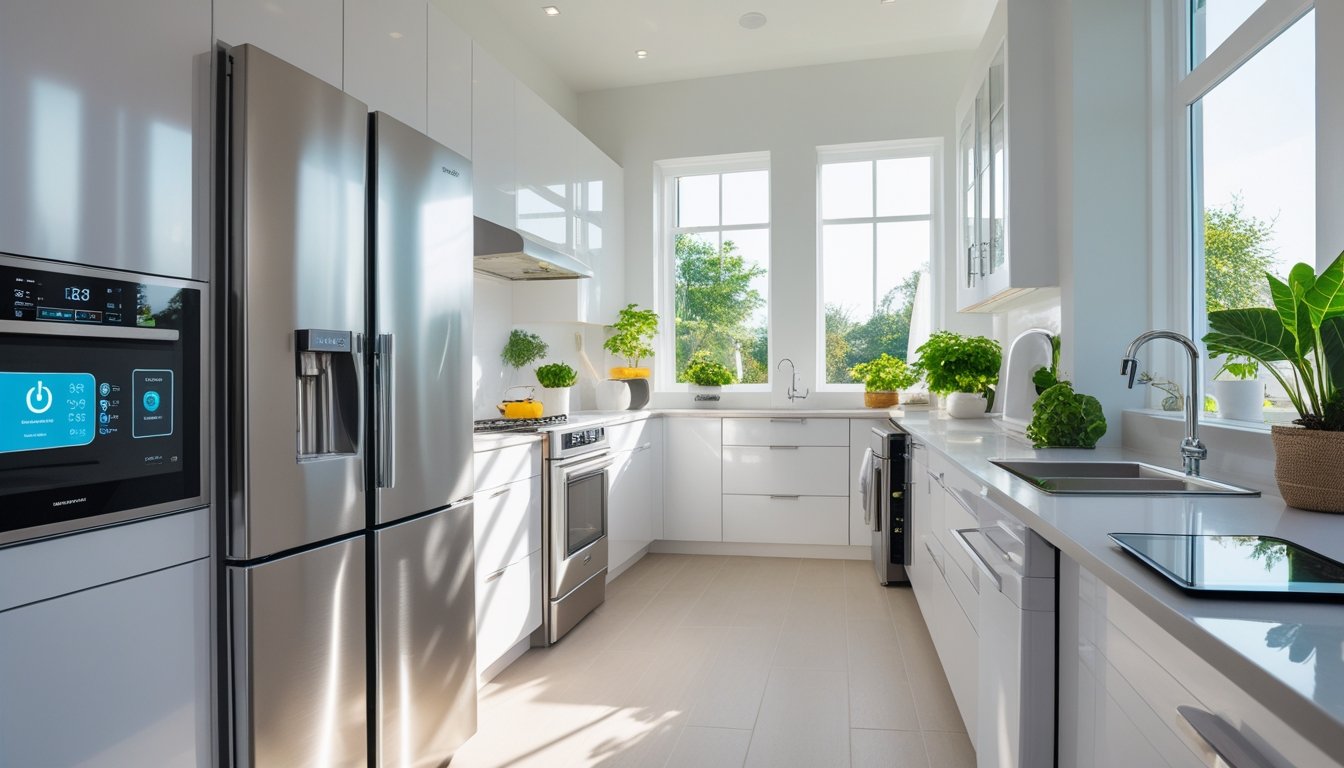Late updated: 14 Jul 2025 18:07
Written by: Oliver Bennett
Maximising Home Energy Efficiency With Smart Appliances: A Guide to Sustainable Living
In today's fast-paced world, the integration of smart appliances into our homes has become a game-changer for enhancing energy efficiency. As we strive to minimise our carbon footprint and reduce energy bills, these innovative devices offer a seamless and intelligent solution. Many smart appliances feature energy-saving capabilities that can significantly lower energy consumption and costs, aligning with our goals for sustainability and convenience.

The transformation of traditional homes into energy-efficient havens is facilitated by cutting-edge technology that simplifies our daily routines. From smart lighting systems that adapt to our habits to appliances that schedule themselves for off-peak hours, the possibilities are both exciting and practical. These smart technologies provide us with the tools to create an eco-friendly and cost-effective environment.
For those navigating the extensive array of smart appliances available, making informed choices is crucial. By focusing on essential devices, we can achieve the maximum potential of our energy-efficient smart home. This approach not only supports financial savings but also contributes to a more sustainable future.
Key Takeaways
- Smart appliances can reduce energy use and costs.
- Integrating smart devices enhances home efficiency.
- Informed choices maximise energy savings.
Essential Smart Appliances for Maximising Home Energy Efficiency

Smart home technology can dramatically cut energy consumption by optimising common household functions. By integrating devices like smart thermostats, lighting systems, and power strips, we can not only lower utility bills but also contribute to a more sustainable environment.
Smart Thermostats and Climate Control
Smart thermostats offer dynamic climate control for our homes. They learn our routines and adjust temperatures accordingly. These devices are equipped with sensors and intuitive software that allow them to reduce energy use while maintaining comfort.
Using a smartphone app, we can control the temperature remotely. This feature is especially beneficial when we're away and forget to adjust the thermostat. Geo-fencing technology can detect when we're nearing home, automatically adjusting the temperature to our preferred settings.
Most smart thermostats are compatible with cyber-safe voice assistants, enabling simplified voice controls. With Energy Star ratings, these devices ensure high efficiency and can significantly reduce energy costs. Installing a smart thermostat can lead to savings, often paying for itself within a few years.
Smart Lighting Systems and Advanced Lighting
Smart lighting systems revolutionise how we illuminate our homes. These systems use LED bulbs paired with intelligent controls, offering more than just remote access through a phone. For example, motion sensors can activate lights only when needed, avoiding unnecessary energy waste.
Many systems incorporate scheduling features, automatically switching off lights during peak sunlight. Energy consumption is further reduced through dimming options that tailor brightness to specific tasks or moods.
Smart lighting can transform the aesthetic of our homes while providing energy savings. By selecting systems with energy-efficient ratings such as Energy Star, we ensure reduced electricity costs. Installing smart lighting is a straightforward way to enhance efficiency and comfort.
Smart Power Strips and Plug Management
Smart power strips are an excellent accessory for managing plug usage. Tailored to prevent the unnecessary draw of energy by inactive devices, these strips decrease phantom loads. They're capable of detecting when connected appliances are in standby, automatically cutting off power.
With integrated timers and remote controls, we can manage our devices efficiently. Apps allow us to monitor energy use and unplug unnecessary devices instantly, providing more granular control over electricity consumption.
It's crucial to remember that smart power strips are not limited to one or two functions. They also often feature surge protection and are vital in managing our home's energy load without constant manual intervention. The blend of cost-effectiveness and functionality makes them an essential component of any smart home aiming for efficiency.
Reducing Energy Consumption and Costs Through Smart Home Technology
Adopting smart home technology offers significant benefits, such as reducing energy consumption, lowering utility bills, and promoting environmental sustainability. We can explore specific ways these technologies contribute to energy efficiency and cost savings.
Lowering Utility Bills and Managing Electricity Rates
Smart home technology enables us to manage utility bills more effectively. With intelligent thermostats, we can adjust temperatures automatically based on occupancy or time of day, thereby minimising energy wastage.
Using smart meters helps us track electricity usage in real-time. By doing so, we gain insights into peak consumption periods and adjust our behaviour or appliance usage accordingly. This can directly lead to lower electricity bills.
Furthermore, automated systems allow for the efficient use of energy during periods with lower electricity rates. This helps us take advantage of off-peak rates, ultimately reducing overall utility costs while maintaining comfort and convenience.
Optimising Energy Savings and Carbon Footprint
Optimisation is a crucial aspect of energy savings with smart devices. By integrating energy-efficient appliances and automated systems, we achieve substantial reductions in energy consumption.
Energy monitoring tools in smart homes provide detailed data on usage patterns. With this information, we can target and eliminate energy inefficiencies, reducing our carbon footprint significantly.
Incorporating renewable energy sources, such as solar panels, alongside smart technology amplifies energy savings. These systems work together to not only conserve energy but also contribute to a more sustainable living environment, aligning with global efforts to combat climate change.
Promoting Sustainability and Energy Conservation
Smart home technology is a powerful tool for promoting sustainability and energy conservation. By automating lighting and climate control, smart homes minimise unnecessary energy use.
We can also set devices to operate only when needed or according to our schedules. This precision in controlling energy use conserves resources and ensures we are not drawing more power than necessary.
Employing smart appliances with Energy Star ratings further enhances our home's energy efficiency. These appliances are designed to consume less power while delivering the same level of performance. By choosing such technologies, we take active steps towards a sustainable and energy-efficient future.
Frequently Asked Questions

In this section, we address common inquiries about how smart technologies and appliances can enhance home energy efficiency. These insights offer guidance on choosing effective devices, optimising energy usage, and reducing environmental impact.
What are the top smart home devices that contribute most to energy efficiency?
Smart thermostats, energy-efficient lighting systems, and intelligent plugs are leading the charge. Thermostats can automatically adjust temperatures based on occupancy patterns. Smart lighting systems reduce unnecessary power usage, while smart plugs minimise standby power consumption, making a significant impact on energy savings.
How do smart home energy management systems reduce utility costs?
These systems provide us with the ability to track and control energy consumption in real-time. By integrating with various smart appliances, they optimise energy usage patterns according to demand and utility rates. This results in reduced energy costs by automatically adjusting appliance operation during off-peak times.
In what ways can smart appliances contribute to household energy savings?
Smart appliances like refrigerators, washers, and air conditioners use advanced technology to operate more efficiently. They consume less electricity by adjusting their functionality based on usage patterns. This adaptive approach leads to considerable reductions in energy consumption and utility costs.
What are the latest advancements in smart home energy solutions for maximising efficiency?
Recent innovations include AI-driven energy management systems and enhanced integration with renewable energy sources. These technologies allow us to seamlessly coordinate energy use, maximise efficiency, and minimise wastage by analysing consumption data and making adaptive decisions.
How does energy consumption monitoring in smart homes assist in reducing carbon footprints?
By providing us with detailed insights into energy usage, smart home monitoring enables more informed decisions about reducing consumption. This proactive approach helps in cutting down unnecessary energy use and, as a result, lowers our carbon footprint significantly.
Can integrating smart home systems really result in significant reductions in energy usage?
Absolutely. When integrated effectively, smart systems streamline energy management by automating routine tasks, reducing manual errors, and enhancing efficiency. The coordinated functioning of devices saves both energy and costs, contributing to a more sustainable and cost-effective household environment.
